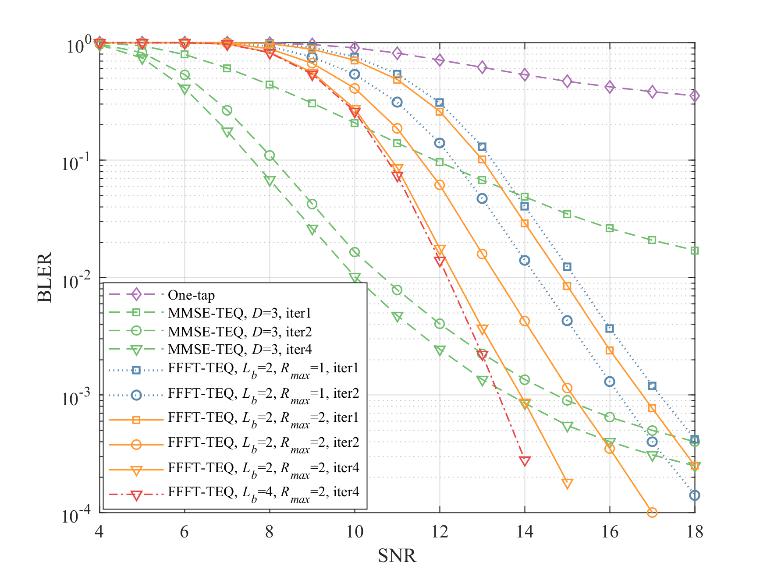In mobile underwater acoustic communications (UAC), the relative movement between the transceivers will cause Doppler spread in the received signal, which will bring inter-carrier interference to the orthogonal frequency-division multiplexing (OFDM) UAC system, thereby distorting the transmitted symbols. The design of a high-performance low-complexity receiver in mobile OFDM UAC systems remains to be a difficult problem.
In order to solve the problem above, researchers from the Institute of Acoustics of the Chinese Academy of Sciences (IACAS) proposed an adaptive turbo equalizer (TEQ) for differential OFDM systems.
Researchers took advantage of the soft information fed back from the channel decoder to reconstruct the symbols on each subcarrier of the OFDM system. Then, they utilized the adaptive TEQ to further eliminate the residual inter-carrier interference induced by estimated symbols, thereby improving the block error rate (BLER) performance of the system (Figure 1). The coefficients of the adaptive equalizer were updated by the low-complexity stochastic gradient method, and the data reuse technique initially proposed in single-carrier systems was utilized to improve the convergence speed of TEQ. Moreover, they also proposed a pilot-based differential encoding scheme to mitigate the error propagation caused by the symbol reconstruction operation described above, thereby further improving the performance of the system.
The BLER performance of the proposed method (Fractional Fast Fourier Transform-Turbo Equalization, FFFT-TEQ) was compared with the MMSE estimation-based TEQ (MMSE-TEQ) in coherent OFDM systems by simulation. The results showed that it obtained better BLER performance in high signal-to-noise ratio (SNR) region (Figure 2). Moreover, its performance was more robust against the change of Doppler frequency (Figure 3). In terms of computational complexity, the FFFT-TEQ was about two orders of magnitude lower than the MMSE-TEQ.
The proposed method provides a possible solution for the realization of high-performance low-complexity mobile OFDM UAC system and has a good application value.
The research, published online in the journal IEEE Transactions on Vehicular Technology, was supported by the National Natural Science Foundation of China (No. 61725106).

Figure 1. Block diagram of the adaptive turbo equalizer for differential OFDM systems. (Image by IACAS)

Figure 2. BLER versus SNR plot. (Image by IACAS)

Figure 3. BLER versus normalized Doppler frequency plot. (Image by IACAS)
Reference:
ZHAO Shiduo, YAN Shefeng, and XI Junyi. Adaptive Turbo Equalization for Differential OFDM Systems in Underwater Acoustic Communications. IEEE Transactions on Vehicular Technology, 2020, Early Access. DOI: 10.1109/TVT.2020.3017778.
Contact:
ZHOU Wenjia
Institute of Acoustics, Chinese Academy of Sciences, 100190 Beijing, China
E-mail: media@mail.ioa.ac.cn


